There’s a theory among some enthusiasts that the 1990s represented ‘peak car’.
This was an era when cars were well-built and reliable, yet still relatively ‘analogue’ – free from desensitising driver aids and the overbearing influence of emissions legislation.
Cars from this era are now recognised modern classics, so we’ve selected some of the best. See if you agree.
1990 Lotus Carlton

The regular Vauxhall Carlton was never cool. But add twin turbochargers to the 3.0-litre straight-six engine – for a total of 377hp and 419lb ft of torque – and it gained instant credibility. Lotus helped create this all-conquering super saloon, with a top speed in excess of 176mph. The Lotus Carlton was even mentioned in a House of Commons debate – so concerned were MPs about a 170mph saloon being let loose on British roads.
1990 Lamborghini Diablo
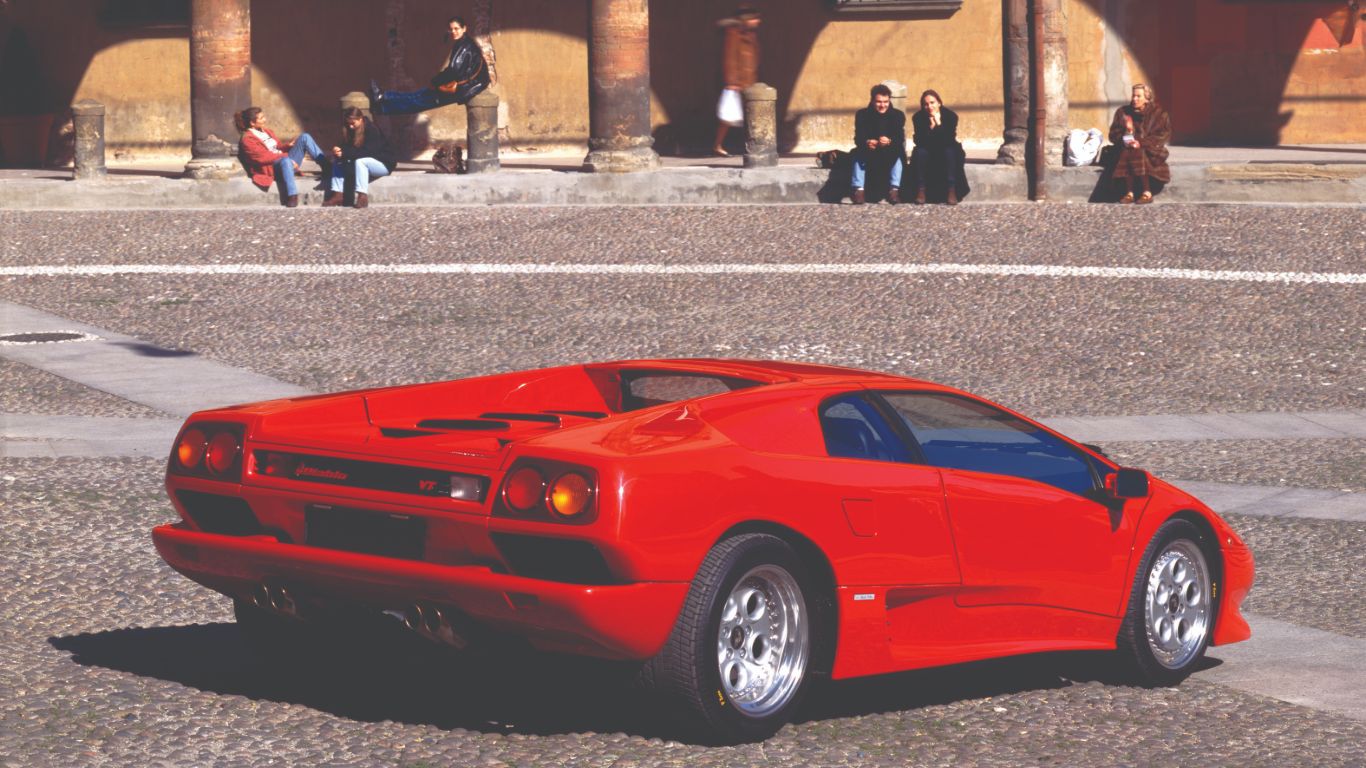
Arguably the most flamboyant Lamborghini before Audi ownership forced the Sant’Agata firm to be slightly more sensible. Longer, wider and lower than the Countach it replaced, the Diablo was also the first Lamborghini to achieve a top speed beyond 200mph. Starting with a 485hp 5.7-litre V12, then ending the decade with a 575hp 6.0 unit, the Diablo remained an iconic supercar throughout the 1990s.
1991 Bugatti EB110 SS

Before the Chiron, or even the Veyron, the Bugatti name was already being attached to mid-engined 4WD supercars. The only product of Roman Artioli’s ill-fated 1990s reincarnation of Bugatti, just 139 EB110s were sold before the company folded. Developing a bespoke 604hp quad-turbo 3.5-litre V12 engine, four-wheel-drive system and carbon fibre chassis was simply too costly an enterprise to sustain. Michael Schumacher owned an EB110 SS, retaining it until 2003, despite his long-standing association with Ferrari.
1991 Subaru SVX
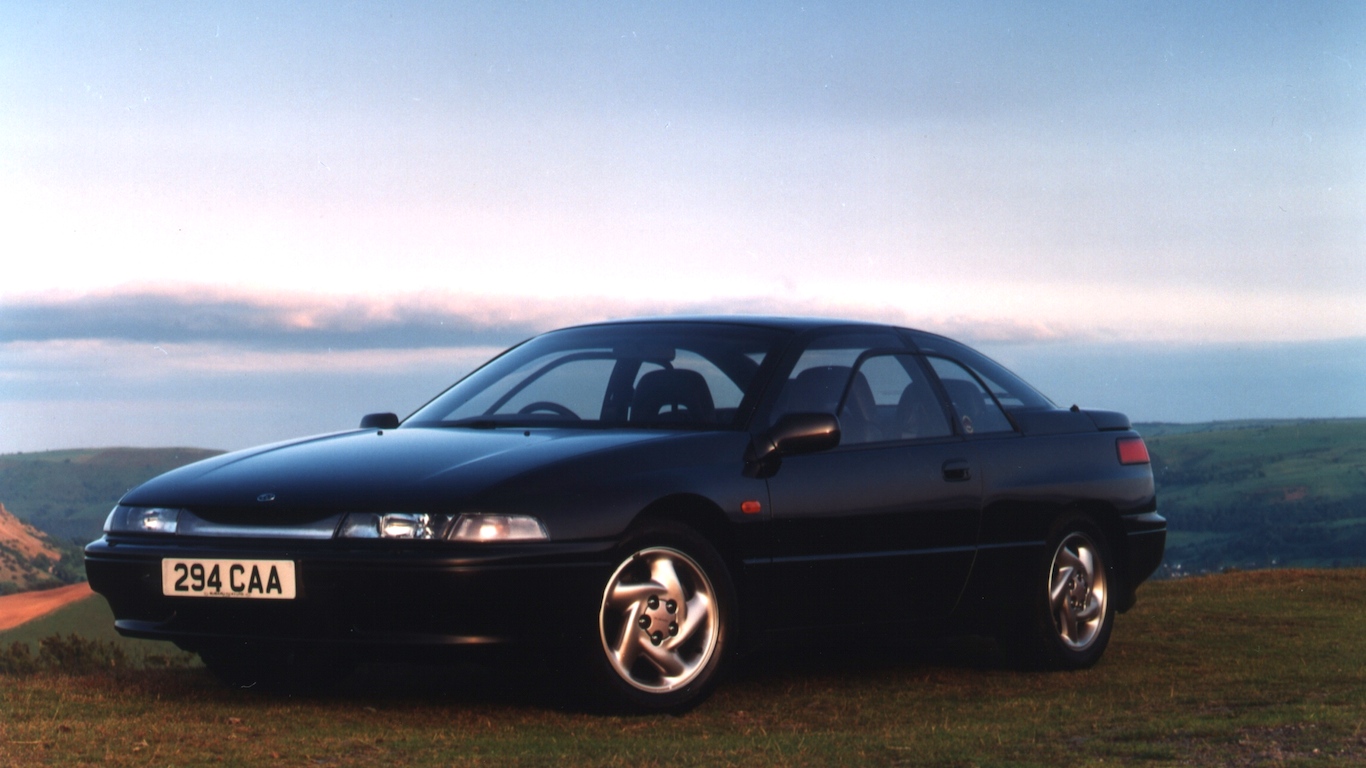
Subaru has always been something of a leftfield brand, but the 1990s were the decade when the company made a significant impact. A 3.3-litre flat-six engine, automatic gearbox and trademark Subaru AWD system aren’t what made the SVX cool. No, it was the handsome Giugiaro-designed body, featuring an unusual two-piece window design. It’s an underappreciated modern classic.
1992 Ford Escort RS Cosworth

The almost-untouchable dream for any Max Power reader during the 1990s, the Escort RS Cosworth blended rally homologation necessity with road-going excess. The fact that performance from the 227hp 2.0-litre turbocharged engine is modest by modern standards is irrelevant. It might only just dip below six seconds to 60mph, but that giant whale-tail spoiler makes it far cooler than a Golf R. Based on current auction values, Ford enthusiasts seem to think so, too.
1992 Volkswagen Mk3 Golf VR6

Forced to comply with new safety and environmental legislation, the Mk3 Golf was bigger and heavier than the much-loved Mk2. It wasn’t until VW squeezed the 2.8-litre VR6 unit from the Corrado beneath the bonnet that the Mk3 became cool. Outputs of 174hp and 173lb ft dealt with the Mk3’s bulk far better, and six cylinders created a hot hatch that sounded genuinely magnificent.
1992 Jaguar XJ220
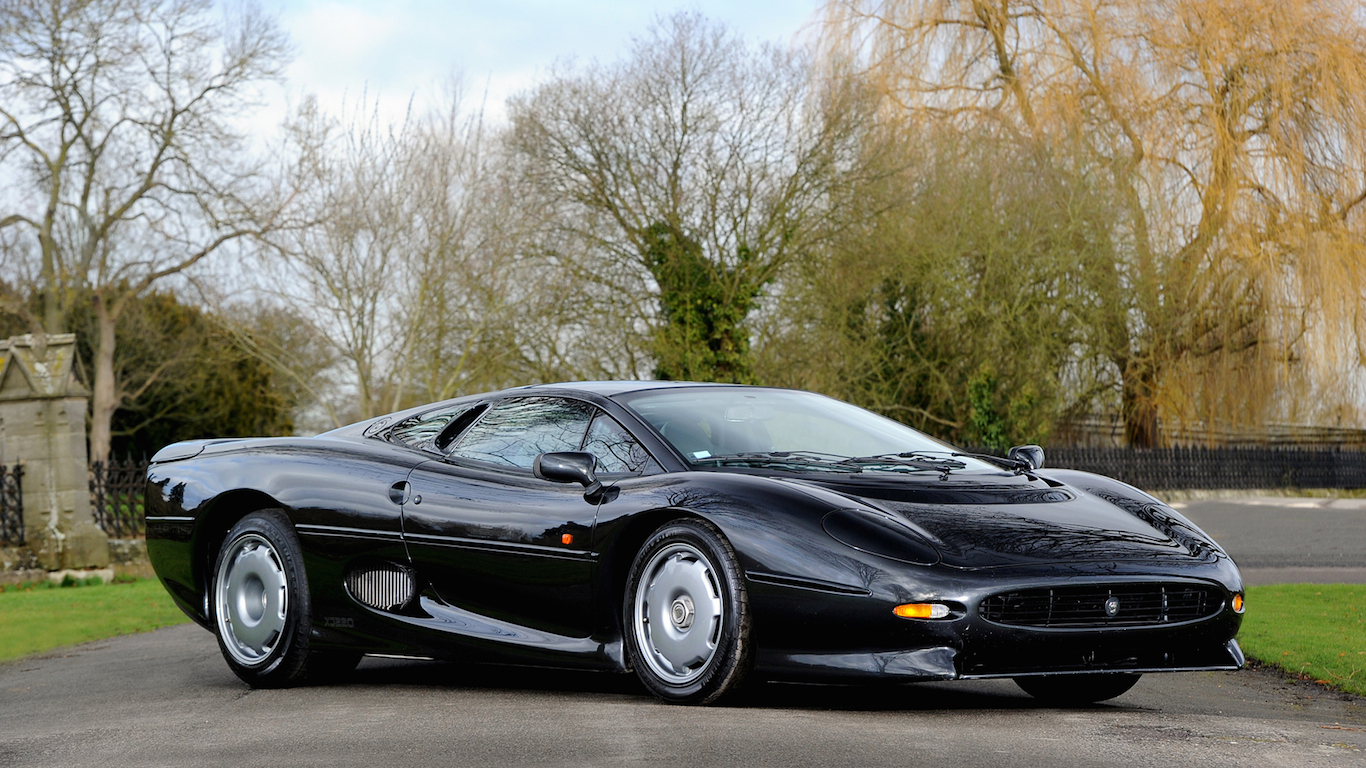
Six cylinders also featured in the XJ220, replacing the V12 unit originally planned with an engine design first used in a Metro. Well, the MG Metro 6R4 rally car at least – and Jaguar did add turbochargers to boost power to 540hp. The XJ220 may have had a troubled gestation (and existence, due to slow sales) but Jaguar still produced a supercar capable of setting a Guinness World Record, with a top speed of 217.1mph. The XJ220 might be the cheapest way into 1990s hypercar royalty.
1992 Ferrari 456 GT

Compare the 456 GT to the car that replaced it, the somewhat awkward 612 Scaglietti, and its inclusion here makes perfect sense. Pininfarina created a truly beautiful 2+2 grand tourer, featuring a 436hp 5.5-litre V12 engine and a luxurious leather-lined interior. It was also the last Ferrari with pop-up headlights, which is almost reason alone for appearing on this list.
1993 McLaren F1

U2 once sang, on their 1997 Pop album, that a Big Mac is bigger than you think. Although they meant the burger, the reverse applies to the McLaren F1, which always looks like it should be a large car. Actually, in terms of length, width, and wheelbase, it’s virtually the same size as a VW Golf. Compact dimensions aren’t the reason it makes this list, clearly. The 240.1mph top speed was a production car world record, and the engine bay was lined with gold to keep the BMW-built 6.1-litre V12 from cooking the body panels. Oh, and there’s that three-seater layout, with a central driver’s seat. Entry price: £8,000,000 at least.
1993 Renault Clio Williams
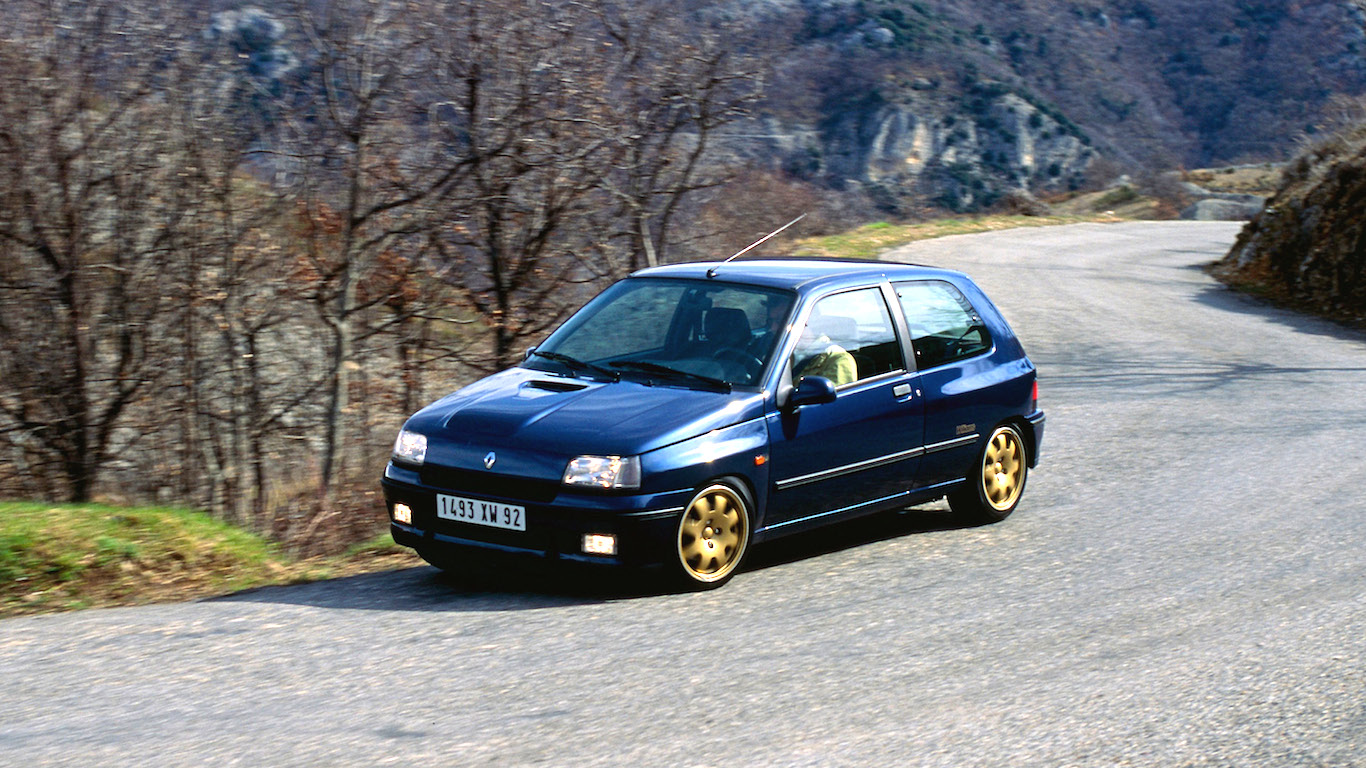
Another Formula 1 connection, and one of greatest hot hatches ever built. Being painted Sports Blue, wearing gold Speedline alloys, and featuring the name of the then-dominant F1 constructor was a strong start for the Clio Williams. Adding a 145hp 2.0-litre engine to a lightweight supermini also helped matters, as did the wonderfully balanced handling and engaging steering. Today, the original 3,800 limited-edition cars are the most sought-after, but even the later second and third phase cars are still highly desirable.
1993 Toyota Supra Turbo

Try to ignore the fact that many A80 Supras have been butchered to create Fast & Furious replicas. Focus instead on this being a Japanese sports car with the genuine potential to worry Porsche 911 owners. Yes, there were naturally-aspirated versions, but the twin-turbocharged model is the one everyone loves. With 320hp, it could hit 60mph in less than five seconds and a 155mph top speed – this was a seriously quick car.
1993 Subaru Impreza 2000 Turbo
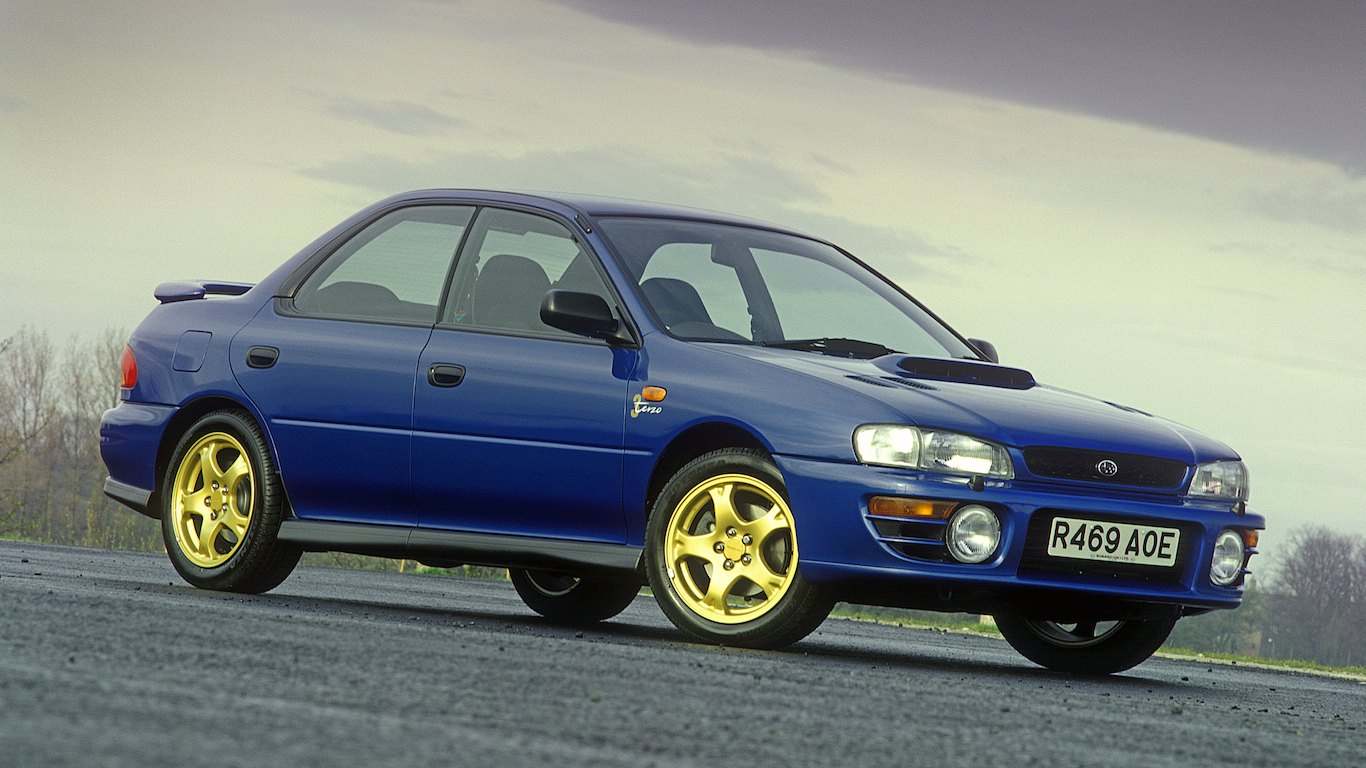
A second appearance for blue paintwork and gold alloy wheels on this list, and an arguably even more iconic association than the Clio Williams. This was where the Impreza story began, with the WRC exploits of Colin McRae making it a household name. A healthy 208hp warbled from the flat-four engine, while Subaru’s 4WD system made it virtually unstoppable on rally stages or country roads. Later versions would gain more power and bigger spoilers, but there is something undeniably cool about the first official Impreza Turbos.
1993 Porsche 968 Clubsport
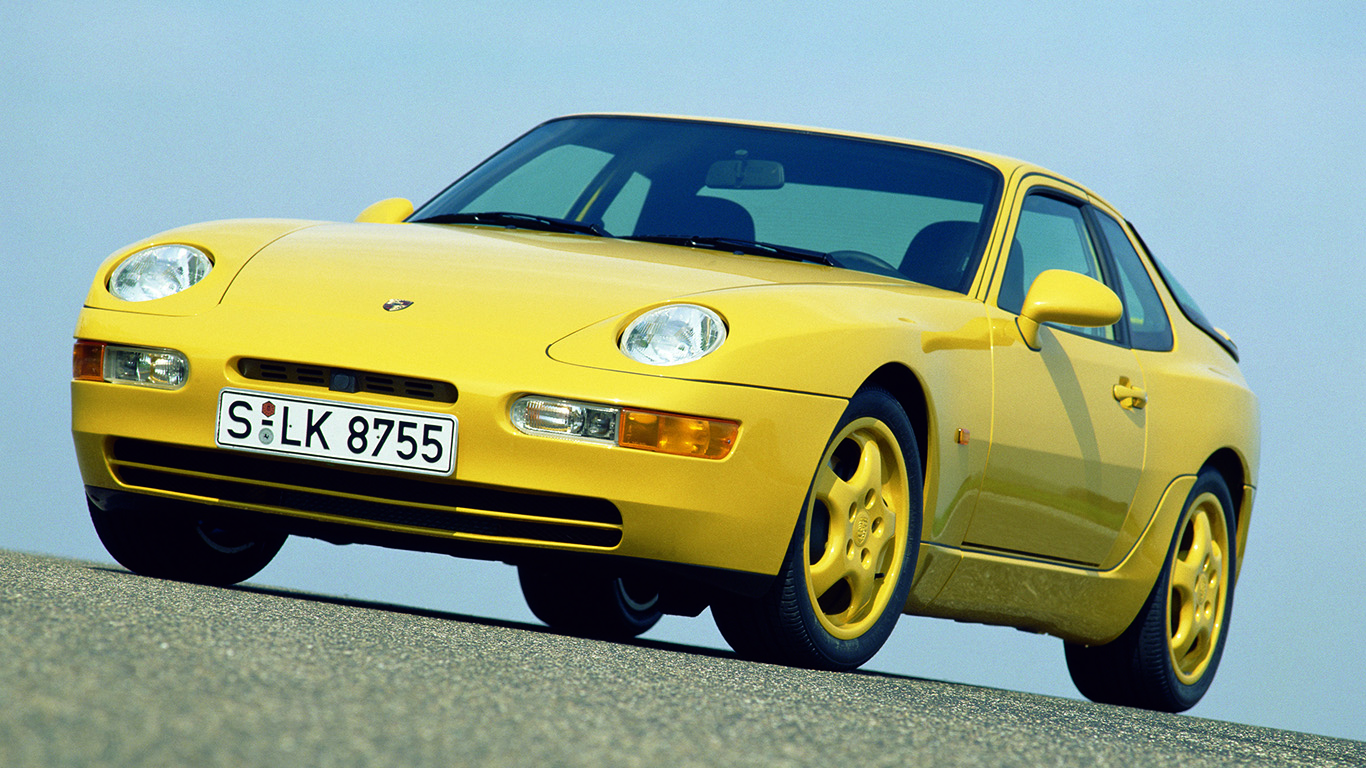
To be nerdy, the Porsche 968 was based on the 944, which itself used the platform from the 1976 924. However, Porsche gave the 1990s version a new name and moved production to Stuttgart, which is good enough for us. The lightweight 968 Clubsport was the best of the lot, ditching air conditioning, rear seats and airbags to shed 100kg of weight. It gained no extra power, but 240hp from a straight-six engine was ample.
1994 Aston Martin DB7
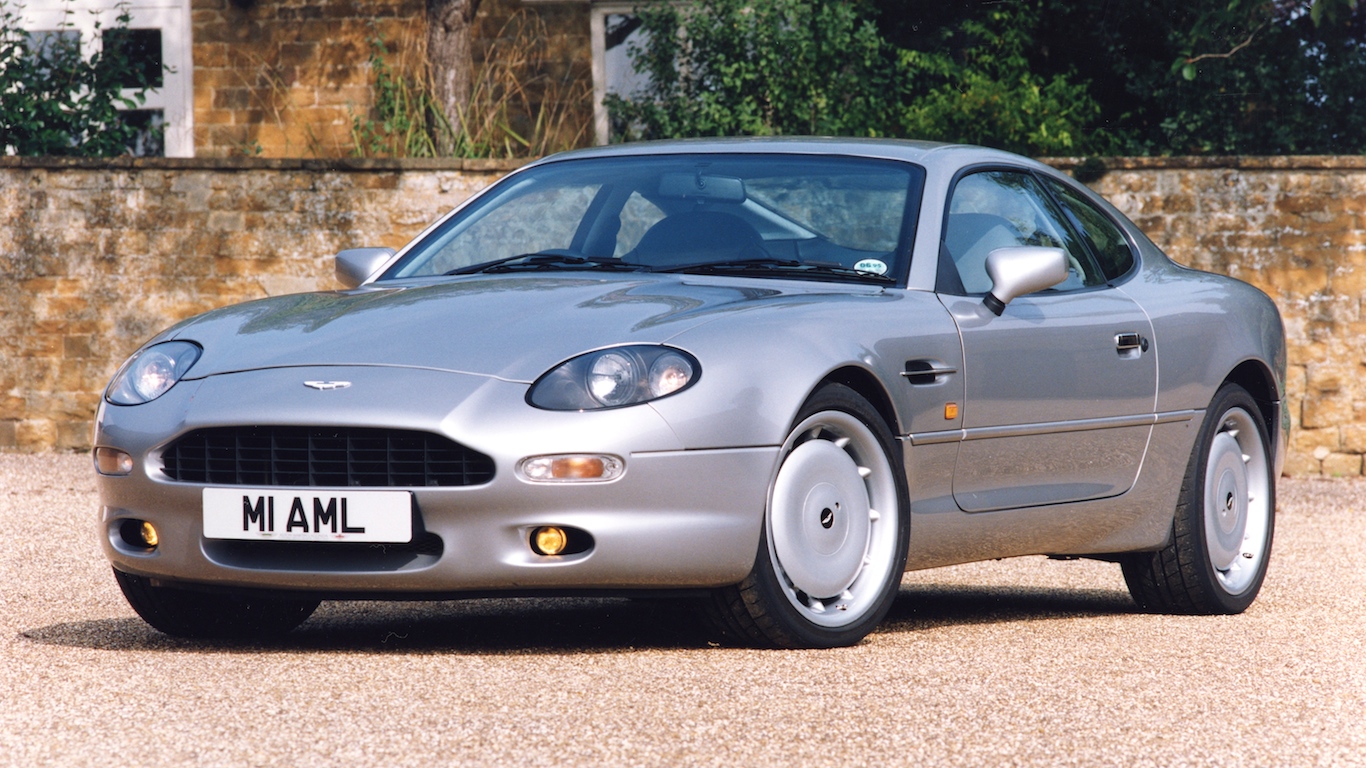
Ian Callum has designed many attractive cars since the DB7, but it’s hard to beat his 1994 creation while working for TWR. Born from an abandoned Jaguar project, the DB7 inherited its underpinnings from the ancient XJS. But it hardly mattered how old the platform was when the car looked this beautiful. The later V12-powered Vantage versions were even better, adding more power and performance.
1994 Audi RS2 Avant

An estate car faster than a McLaren F1? Yes, if we’re measuring a 0-30mph sprint. The McLaren took 1.8 seconds, while the Audi wagon needed just 1.5 seconds. After that point, not even the 311hp and 302lb ft of torque from the five-cylinder turbo engine, combined with a Quattro drivetrain, could compete with the F1. When new, the RS2 Avant was the fastest estate car in the world, having been developed in partnership with Porsche. Spot the Porsche Cup 17-inch alloy wheels, Porsche Brembo brakes and Porsche-inspired front bumper. Peak coolness comes when the RS2 Avant is painted in Nogaro Blue.
1995 Alfa Romeo GTV

A wedge-shaped Italian car, designed by Pininfarina, and offering the option of a 3.0-litre V6 engine? Oh yes. It looked, sounded and went like a downsized Ferrari – which was pretty much the point of the GTV’s existence. The interior was tiny, with an impractical boot further adding to the ‘supercar in miniature’ effect. Traditional Alfa styling elements, such as the central front grille and telephone-dial alloy wheels, helped bolster the image.
1995 Ferrari F50
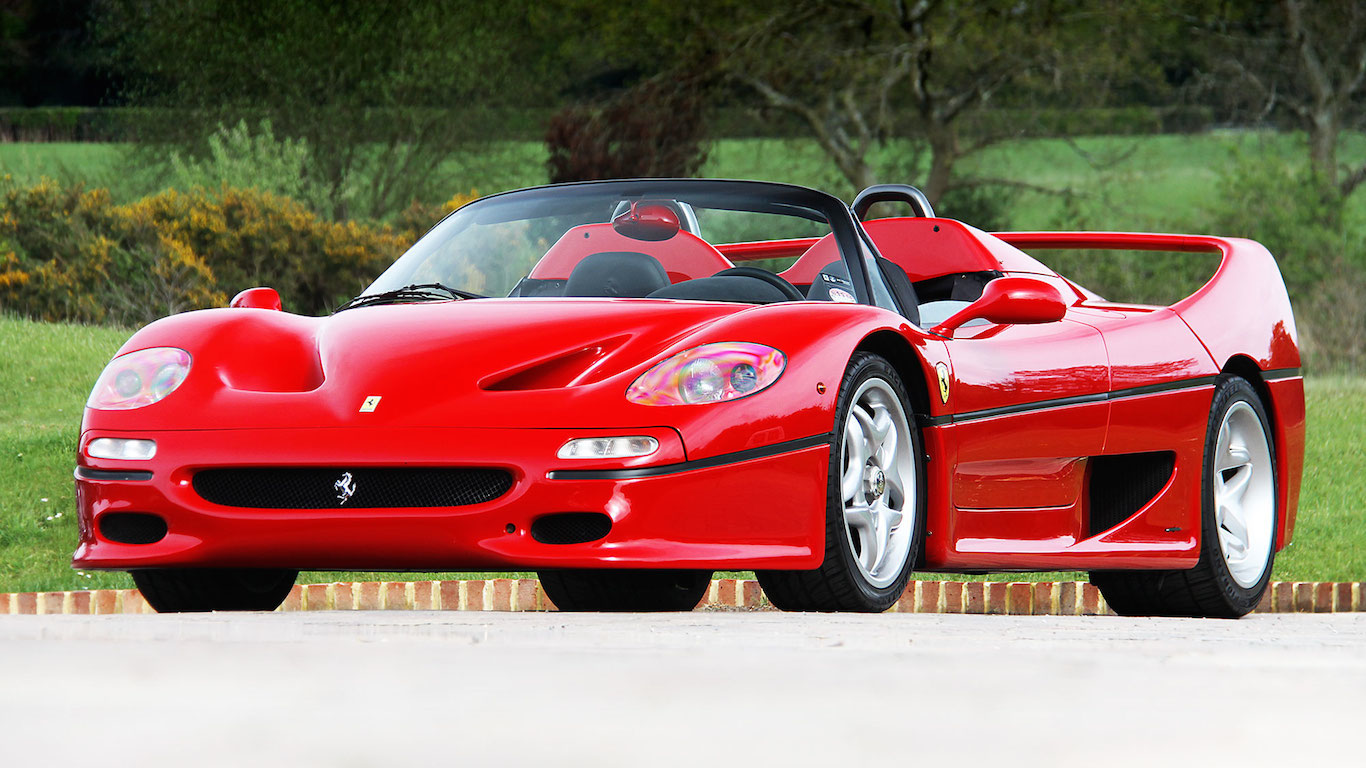
Following the legendary Ferrari F40 was no easy task, and the F50 suffered unfair criticism when new for failing to live up to its predecessor. In hindsight, the F50 was a brave move. Bolting an F1-derived 513hp V12 engine to a carbon fibre monocoque chassis created something far closer to a road-going Formula 1 car than ever seen before. The styling had aerodynamic efficiency as its primary aim, meaning this isn’t the most attractive Ferrari ever built. Yet a top speed of 202mph makes it easy to forgive the slightly bulky proportions.
1995 Porsche 993 GT2

‘Brutal’ is perhaps the best word to describe the 993-generation GT2. Created for racing homologation, the flared wheel arches were bolted on, while the rear wing incorporated giant air intakes. Although the turbocharged 3.6-litre flat-six engine was carried over from the normal 911 Turbo, the 4WD system was ditched in favour of rear-wheel drive. A power output of 424hp in a car weighing less than 1,300kg made for a mildly terrifying driving experience. Only 57 examples of the 993 GT2 were built, making them incredibly rare and collectable.
1996 Peugeot 406 Coupe
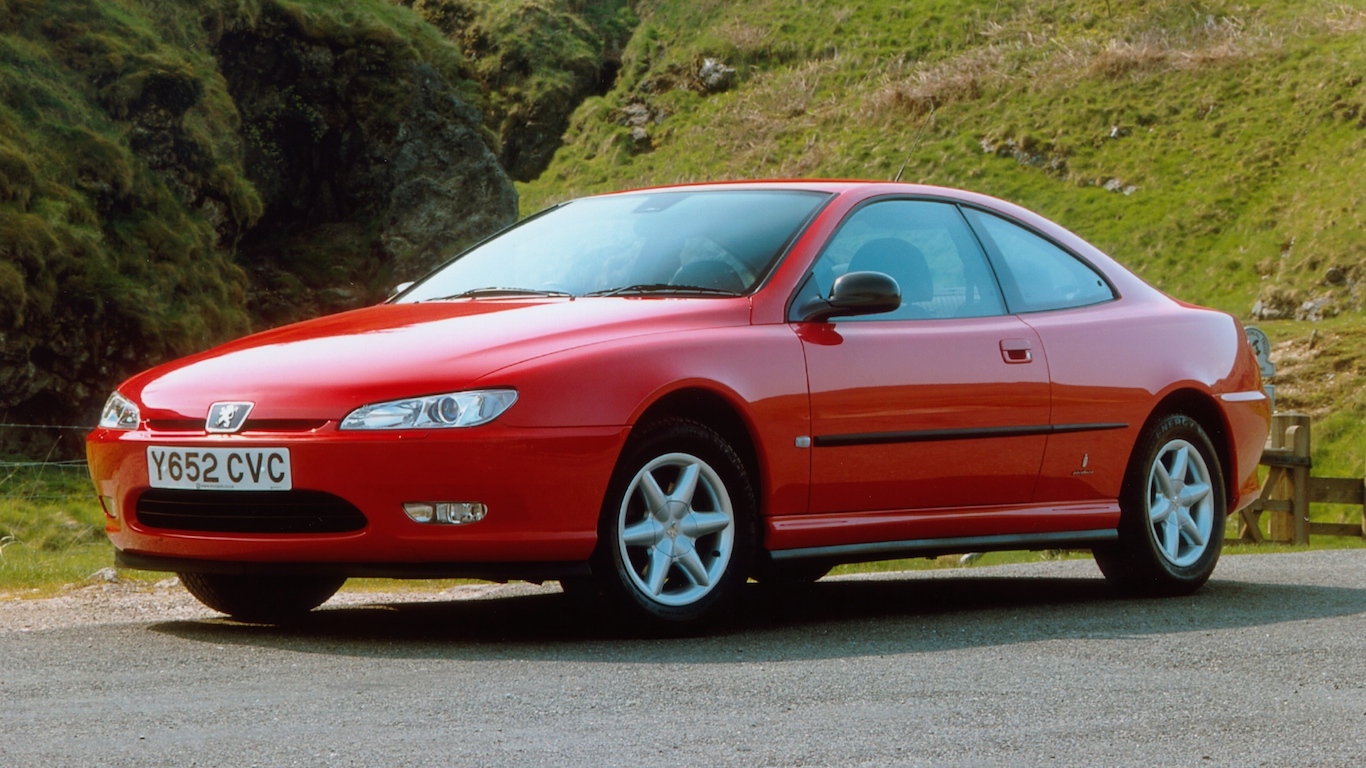
Designed by the same man at Pininfarina who styled the Ferrari 456 GT, the similarities between the two are hard to ignore. The regular 406 was already blessed with a decent chassis, meaning the addition of a curvaceous coupe body could only be a good thing. The option of a 190hp 3.0-litre V6, plus a luxurious leather interior, helped the 406 Coupe feel like a junior grand tourer.
1996 Fiat Coupé 20v Turbo

Although the Fiat Coupé was launched in 1993, things became more exciting in 1996 with the introduction of the 20v Turbo. Powered by a 2.0-litre five-cylinder turbocharged engine with 217hp, 0-62mph was dispensed in 6.3 seconds. Design was by Chris Bangle, who later found fame (or infamy) at BMW. The angular styling was divisive when new but, like many Bangle designs, it has aged rather well. And the body-coloured interior trim is still a neat touch.
1996 Dodge Viper GTS

The Dodge Viper was born in 1992, with the open-top RT/10 roadster. However, the GTS coupe of 1996 is eminently cooler. White stripes on blue paintwork stir up classic racing memories, while the Shelby Daytona Coupé also inspired the ‘double bubble’ roof. Mechanical changes meant the 8.0-litre V10 engine now produced 450hp and 490lb ft of torque, with the more aerodynamic body allowing for a top speed of 185mph. A strong contender for the coolest American car ever.
1996 Lotus Elise S1

There is something telling about the fact that the Lotus Elise still remains in production today – albeit with numerous upgrades and enhancements. The first-generation Elise is the purest of them all, weighing just 725kg thanks to its bonded aluminium construction. Even with a 118hp Rover K-Series engine mounted in the middle, the Elise was able to entertain, and later versions brought plenty more power to the party.
1996 Porsche Boxster

Faced with a financial crisis in the early 1990s, Porsche needed a cheaper model to support the 911. Enter the mid-engined Boxster, with a design inspired by the 550 Spyder of the 1950s. Some complained that the front-end styling was copied for the 996-generation 911, while others dismissed it as a car for posing, not driving. However, its popularity helped save Porsche from oblivion, and the company is now hugely profitable. It’s also worth noting that the original Boxster featured in its very own PlayStation game – Porsche Challenge – released in 1997.
1996 Peugeot 106 GTI
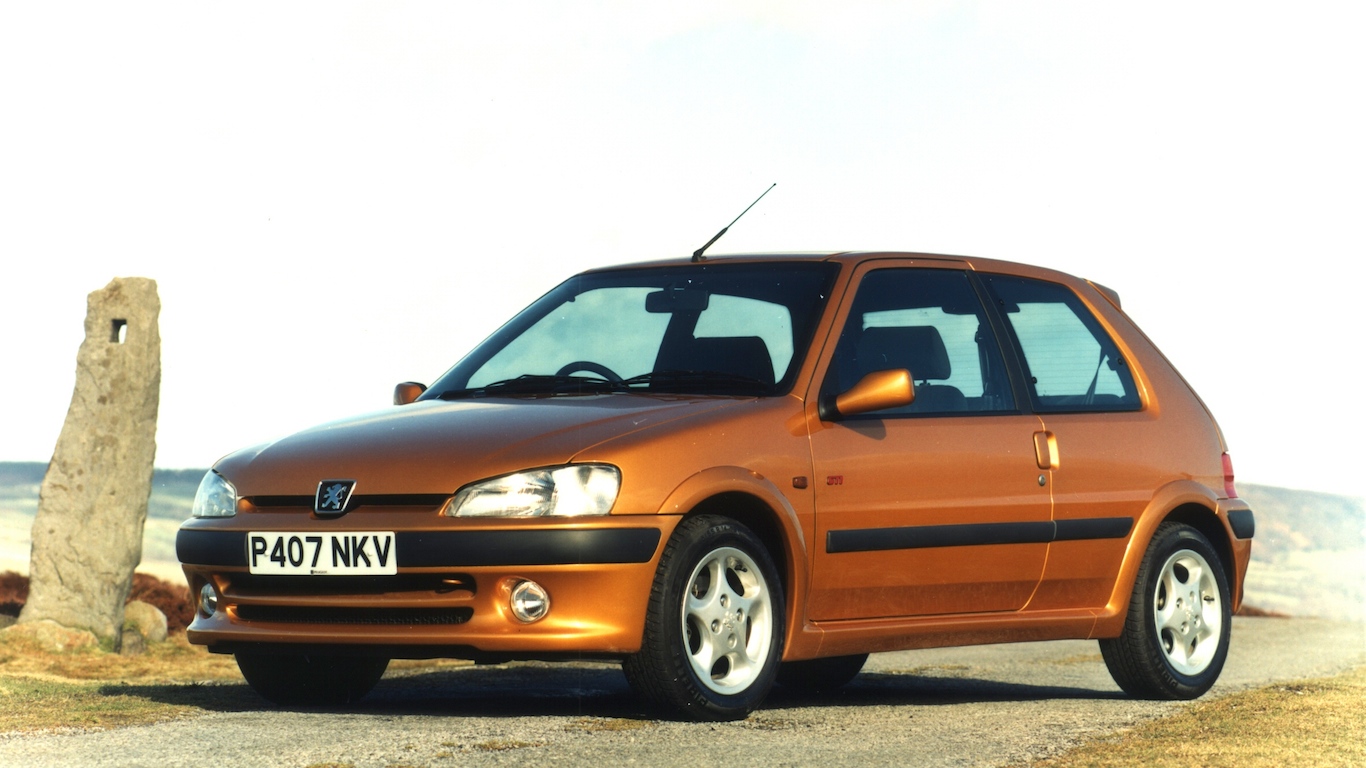
For those growing up with 1990s modified car culture, the Peugeot 106 GTI was much admired. A 118hp 1.6-litre engine, combined with low weight, made for enthusiastic performance and the added bonus/risk of lift-off oversteer when cornering. We could have included the mechanically-identical Citroen Saxo VTS, but the 106 GTI somehow exudes slightly more class when parked outside a McDonald’s drive-thru.
1996 Audi S8

We spent a month with this Ronin star, borrowed from Audi UK’s heritage fleet, and loved it. Understated looks, Teutonic build quality and a 4.2-litre V8 with 335hp are a sweet mix – and perfect for an aggressive car chase. We’ve been searching the classifieds ever since.
1996 TVR Cerbera

Unpicking TVR’s reputation today is a difficult one. On one hand, the Blackpool factory created cars like the Cerbera, which was capable of taking on supercars costing substantially more. The 4.2-litre V8 version had 350hp, while the later 4.5-litre version made 420hp. But then there are the well-known stories of dramatic mechanical breakdowns, not least in cars loaned to the motoring press. It all created a slightly bonkers image, which no doubt helped fuel interest in the 185mph+ Cerbera coupe. The hidden buttons to open the doors are reason enough for inclusion here… provided they’re working.
1997 Citroen Xsara Coupé VTS

The Xsara is included, quite shamelessly, because of that TV advert featuring Claudia Schiffer. The German supermodel was reportedly paid around £3 million, despite not actually having passed her driving test, and Schiffer’s advert soon became more famous than the car itself. Although not as rakish as the Peugeot 306 it was derived from, the Xsara Coupé benefited from the 164hp 2.0-litre engine in VTS trim. It even had a motorsport pedigree, having been campaigned by Sébastien Loeb in three of his World Rally Championship-winning seasons.
1997 Ford Puma
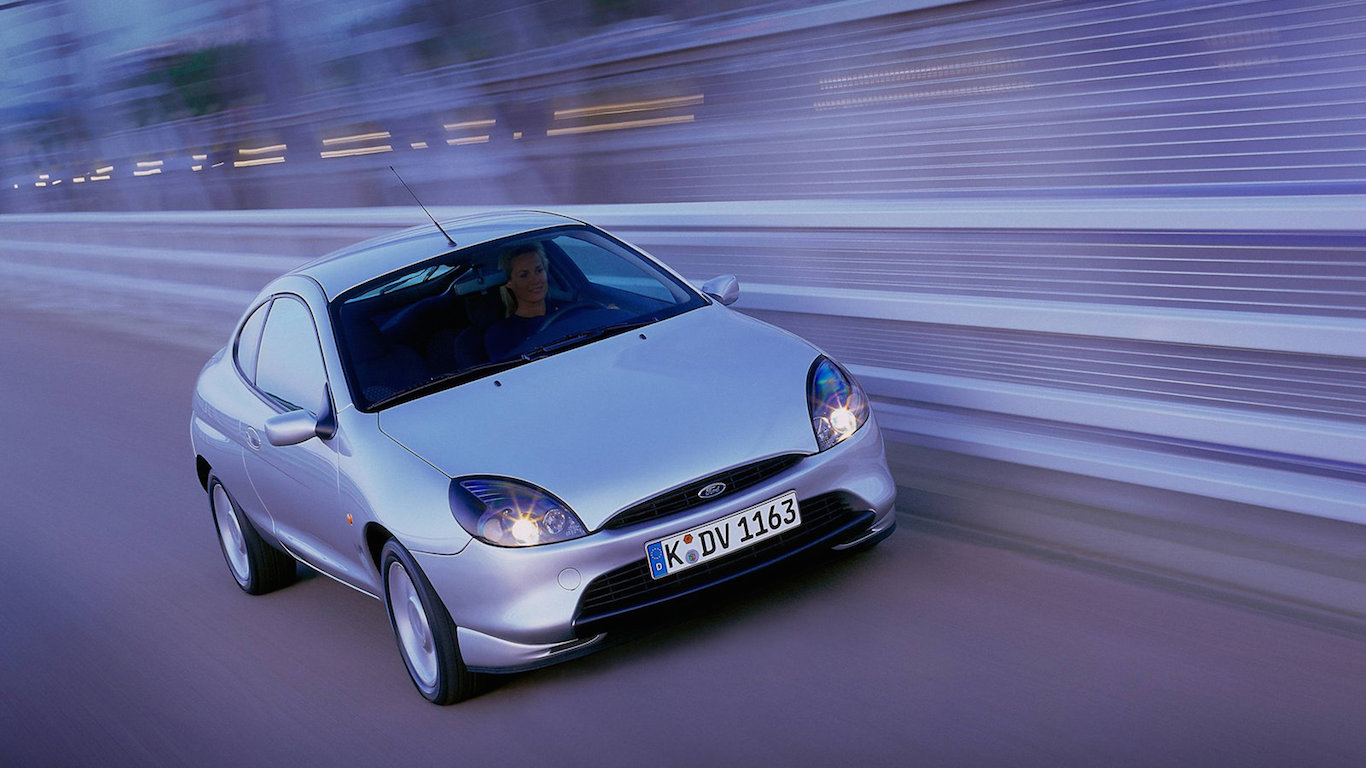
Another 1990s compact coupe, and another with a memorable TV advert. This time, it was a recreation of the car chase from Bullitt, replacing the classic Mustang with a Puma. Clever advertising aside, the Puma deserves credit in its own right, with one of the best interpretations of Ford’s ‘New Edge’ design philosophy and an agile, rewarding chassis. The later Racing Puma added limited-edition fast Ford kudos.
1997 Volvo C70 Coupe

Arguably the best looking Volvo since the P1800 of the 1960s, the C70 melded the Swedish brand’s upright front grille and headlights to a curvaceous coupe body. Peter Horbury was, thankfully, more than capable of this design challenge and created the handsome – but still very Volvo – C70. Available with a 237hp 2.3-litre straight-five turbocharged engine, and the option of Saffron Pearl Metallic paint seen here, this was arguably the start of the Scandi-cool renaissance.
1997 Plymouth Prowler

Looking like almost nothing else built for six decades, the Plymouth Prowler celebrated the hot rods of the 1930s. The only thing it lacked was a throbbing V8 engine: it was left with only a 3.5-litre V6. Initially making just 214hp, later upped to 253hp, the Prowler was undoubtedly more show than go. Bonus points are awarded for the official option of a trailer designed to look like the back of the car.
1998 BMW E39 M5
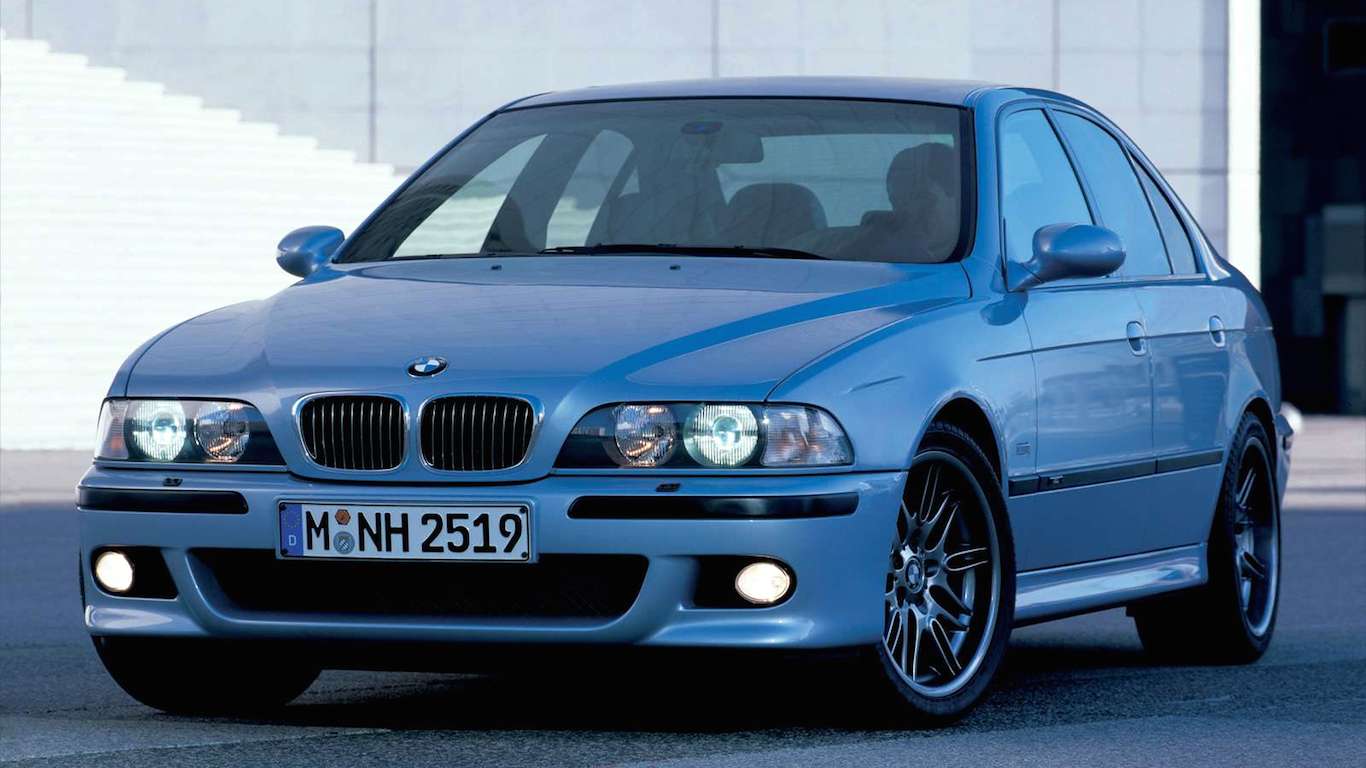
We could have picked the regular E39 5 Series saloon, such was its reputation during the 1990s. But the greatest E39 arrived in 1998, despite BMW previously insisting the 540i would be more than sufficient. With a 4.9-litre V8 generating 394hp and 369lb ft of torque, the manual-only M5 would hit 62mph in 4.8 seconds, plus a top speed of 155mph. This M5 would rock like a muscle car if revved while stationary, plus it had one of the earliest examples of a ‘Sport mode’ button to sharpen throttle response and add weight to the steering.
1998 BMW M Coupe

Allegedly developed in secret by a group of engineers who saw potential in adding rigidity to the Z3 M roadster, the M Coupe proved divisive among buyers and critics alike. The odd proportions earned it the nickname of ‘Breadvan’, and the driving experience was as muscular as those rear haunches. Traction control didn’t appear until 2001, meaning owners of the first cars had to be cautious when making use of the 321hp 3.2-litre straight-six, borrowed from the M3.
1998 Audi TT Coupe

Don’t think of the TT as a Volkswagen Golf in a fancy suit. Instead, think of this as Bauhaus-inspired coupe, which has remained timeless despite being more than two decades old. It also boasted an interior that was a lesson in stark minimalism – and also hasn’t aged. However, it’s harder to ignore the early high-speed stability problems, or that the 225hp 1.8-litre turbo engine was as bland as it was effective.
1998 Maserati 3200 GT

Make no mistake, only the original 3200 GT version of the Maserati Coupe should be considered cool. That’s thanks to its LED ‘boomerang’ tail lights. Later cars ditched these in order to comply with US regulations, ruining the beautiful behind. Backside aside, the 3200 GT signalled the modernisation of Maserati. A 365hp twin-turbo 3.2-litre V8 only adds to the cool-factor.
1999 Nissan R34 Skyline GT-R

Our final choice is one that demonstrates how far cars developed in the 1990s. The 1999 Skyline GT-R featured a 276hp 2.6-litre turbocharged engine and a computer-controlled 4WD system that sent torque to whichever wheel had the most grip. The R34 also looked vicious, with a mighty rear spoiler, gaping air intakes and flared wheelarches. Add a multi-function display that offered up G-force readings, and this really was a sports car set for the new millennium.



[…] The coolest cars of the 1990s […]
[…] BMW 3 Series (E36) has been named the best affordable car of the 1990s by Bargain Cars […]
[…] The coolest cars of the 1990s […]
[…] Although based on the XJS, its design and engineering is said to incorporate elements inspired by other great Jaguar racing cars, including the XJR-9 and XJR-15 – along with the XJ220 supercar. […]